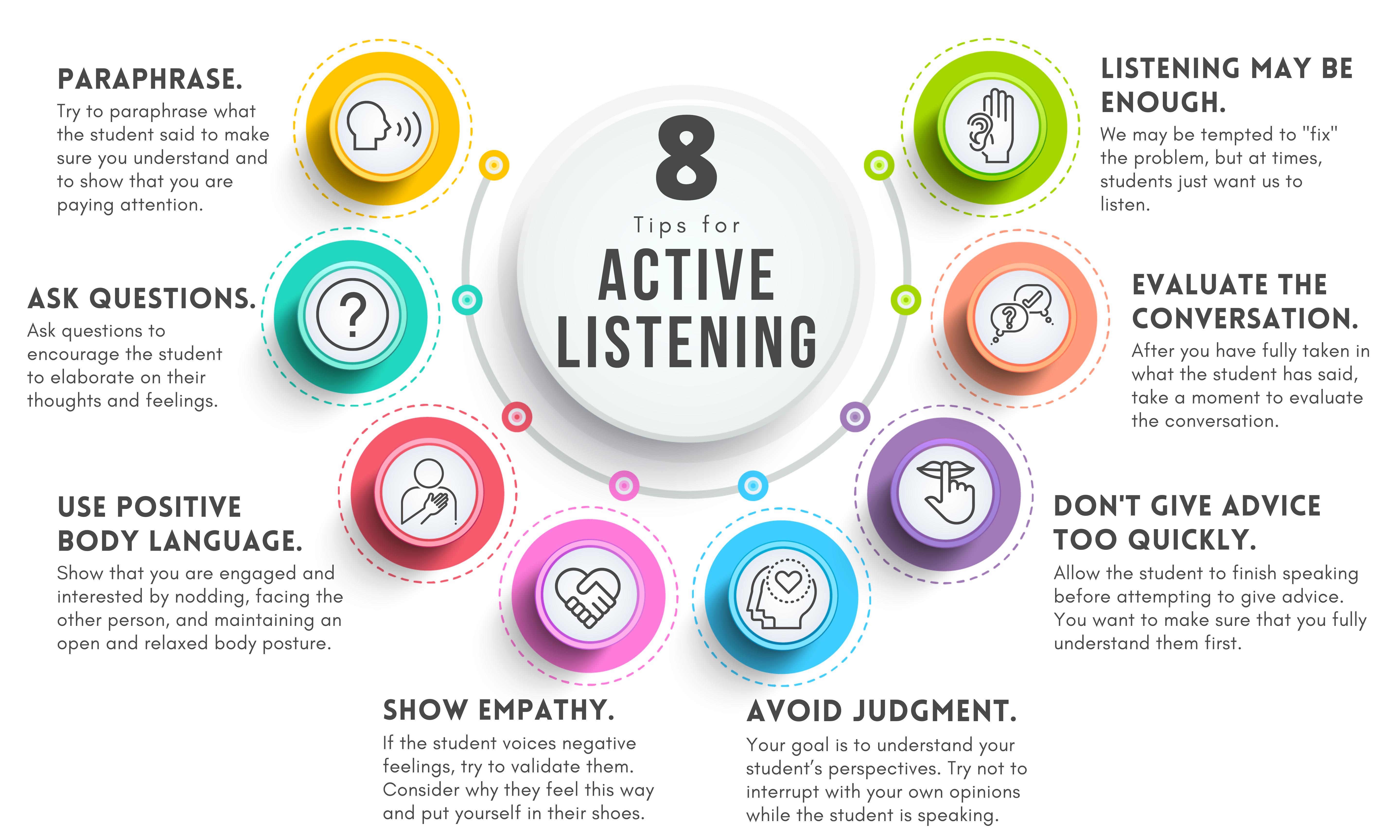
Active listening is a communication technique that involves giving full attention to the speaker, understanding their message, responding thoughtfully, and remembering what was said. It’s a skill that can be learned and improved upon and is essential for effective interpersonal communication.
Here are the key concepts of active listening:
1. Full Attention:
- Giving the speaker your undivided attention and acknowledging the message. This means not just hearing the words, but also paying attention to non-verbal signals like tone of voice and body language.
2. Non-verbal Signals:
- Using body language such as nodding, eye contact, and leaning forward to show interest and encourage the speaker.
3. Paraphrasing:
- Rephrasing what the speaker has said in your own words to demonstrate understanding. This also gives the speaker the opportunity to clarify if you’ve misunderstood.
4. Reflection of Feelings:
- Communicating that you understand not just the content of the message, but also the emotions behind it. This is empathy in action.
5. Clarifying Questions:
- Asking questions to ensure understanding and to elicit more information.
6. Summarizing:
- Restating the main points of the conversation to confirm understanding and to review progress.
7. Avoiding Interruption:
- Allowing the speaker to finish their thoughts without interjecting, thereby providing them space to express themselves fully.
8. Withholding Judgment:
- Keeping an open mind and avoiding premature judgment or evaluation of what the speaker is saying.
9. Feedback:
- Providing appropriate and constructive feedback to show that you’ve integrated the information provided.
Active listening is not just about the mechanics of hearing, but also about the more nuanced aspects of interpretation and interaction. It’s a powerful tool for building relationships, resolving conflicts, and improving understanding and collaboration in both personal and professional settings.